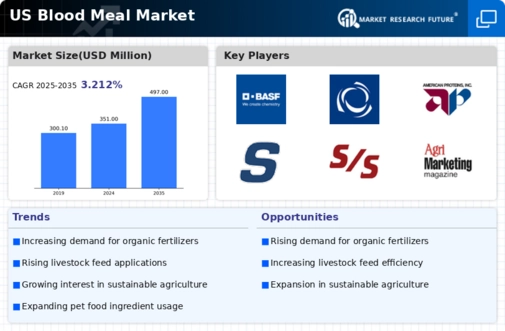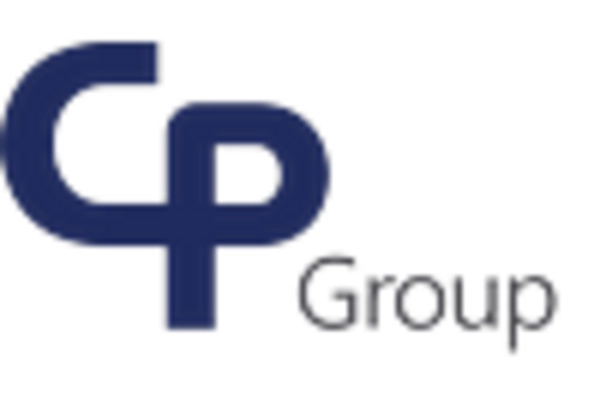Increasing Livestock Production
The blood meal market is experiencing growth due to the rising demand for livestock products in the United States. As the population increases, the need for meat, dairy, and eggs escalates, leading to higher livestock production. Blood meal serves as a high-protein feed ingredient, which is essential for the efficient growth of animals. In 2025, the livestock sector is projected to expand by approximately 3.5%, further driving the demand for blood meal. This trend indicates that farmers are increasingly seeking cost-effective and nutritious feed options to enhance productivity. Consequently, the blood meal market is likely to benefit from this upward trajectory in livestock production, as it provides a sustainable solution to meet the nutritional needs of animals.
Expansion of the Pet Food Sector
The blood meal market is experiencing a boost from the expansion of the pet food sector in the United States. As pet ownership continues to rise, there is an increasing demand for high-quality, protein-rich pet food products. Blood meal is recognized for its high protein content and is being incorporated into various pet food formulations. In 2025, the pet food market is projected to grow by approximately 4%, which could lead to a corresponding increase in the demand for blood meal as a key ingredient. This trend indicates that the blood meal market is likely to benefit from the growing pet food sector, as manufacturers seek to enhance the nutritional profile of their products.
Nutritional Benefits of Blood Meal
The blood meal market is significantly influenced by the recognized nutritional benefits of blood meal as a feed ingredient. Rich in protein, blood meal contains around 85% protein content, making it an attractive option for livestock feed. This high protein level is crucial for animal growth and development, particularly in young animals. As awareness of the importance of nutrition in livestock production grows, farmers are increasingly incorporating blood meal into their feeding regimens. The nutritional profile of blood meal not only supports animal health but also enhances feed efficiency, which is vital for maximizing production. This trend suggests that the blood meal market will continue to thrive as more producers recognize the advantages of using blood meal in their livestock diets.
Rising Awareness of Animal Welfare
The blood meal market is also influenced by the growing awareness of animal welfare among consumers and producers alike. As consumers become more conscious of the ethical treatment of animals, there is a shift towards sourcing feed ingredients that support humane farming practices. Blood meal, derived from slaughterhouse by-products, is often viewed as a more ethical option compared to other protein sources that may involve intensive farming practices. This perception is likely to drive demand for blood meal as a sustainable and responsible feed ingredient. In 2025, it is expected that the blood meal market will benefit from this trend, as producers seek to align their practices with consumer expectations regarding animal welfare.
Regulatory Support for Sustainable Practices
The blood meal market is positively impacted by regulatory frameworks that promote sustainable agricultural practices in the United States. Government initiatives aimed at reducing waste and encouraging the use of by-products in animal feed are gaining traction. Blood meal, being a by-product of the meat processing industry, aligns with these sustainability goals. In 2025, it is anticipated that more states will implement policies that incentivize the use of blood meal as a feed ingredient, thereby reducing environmental impact. This regulatory support not only enhances the market potential for blood meal but also encourages producers to adopt more sustainable practices. As a result, the blood meal market is likely to see increased demand driven by these favorable regulations.

















Leave a Comment